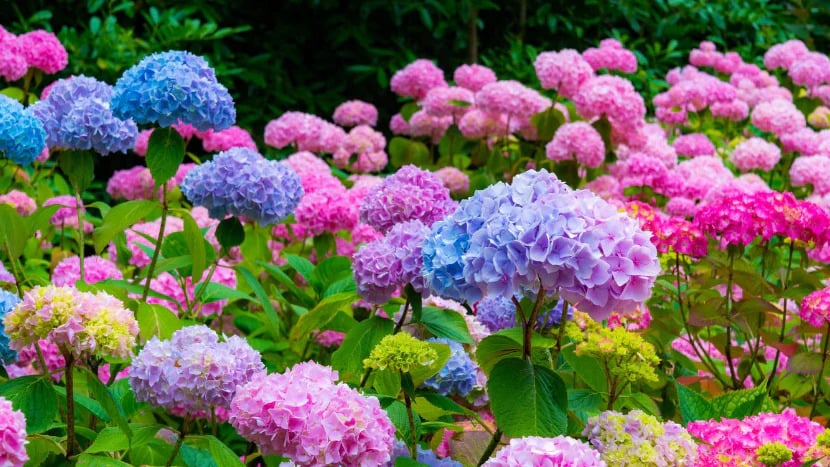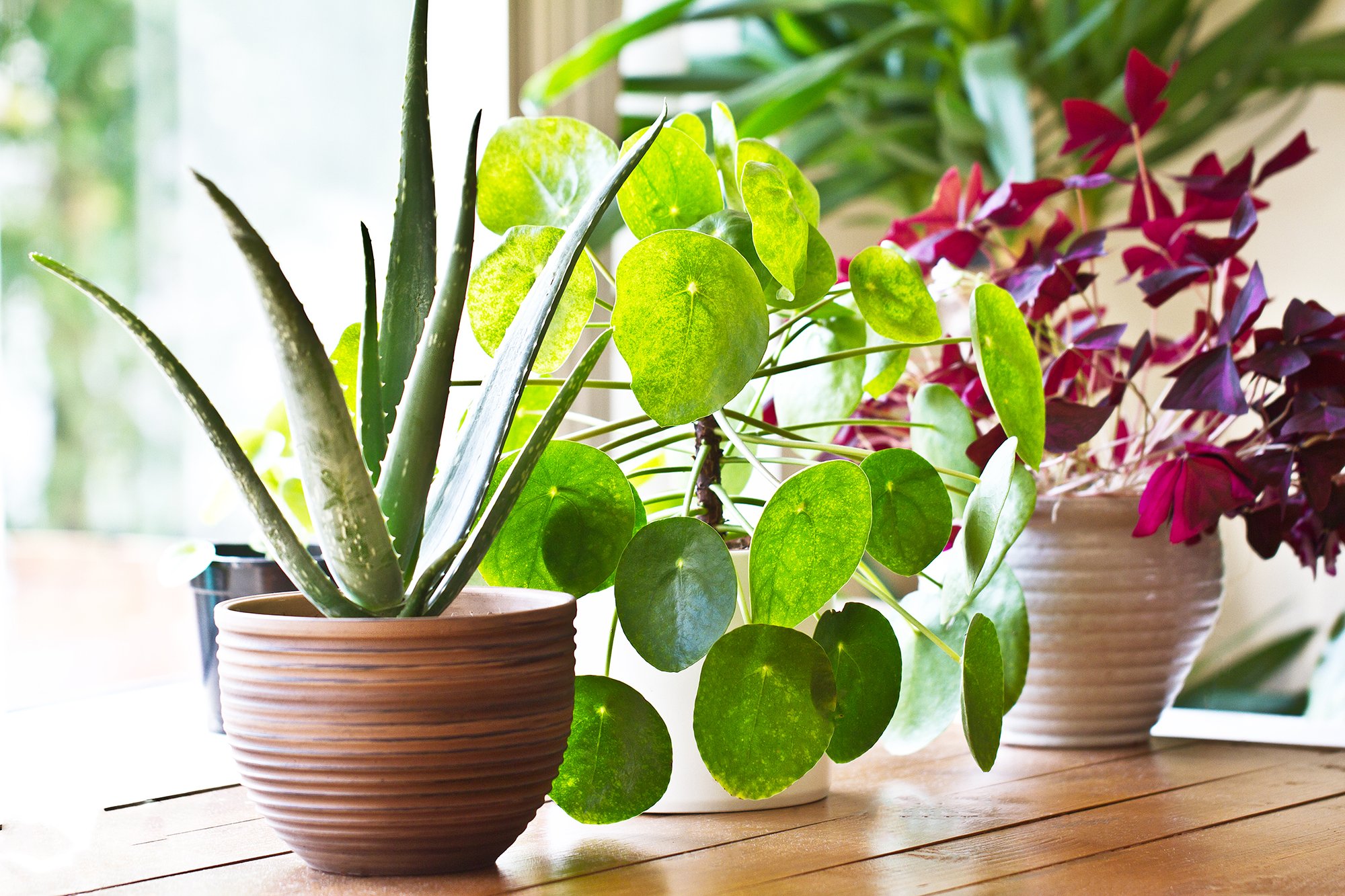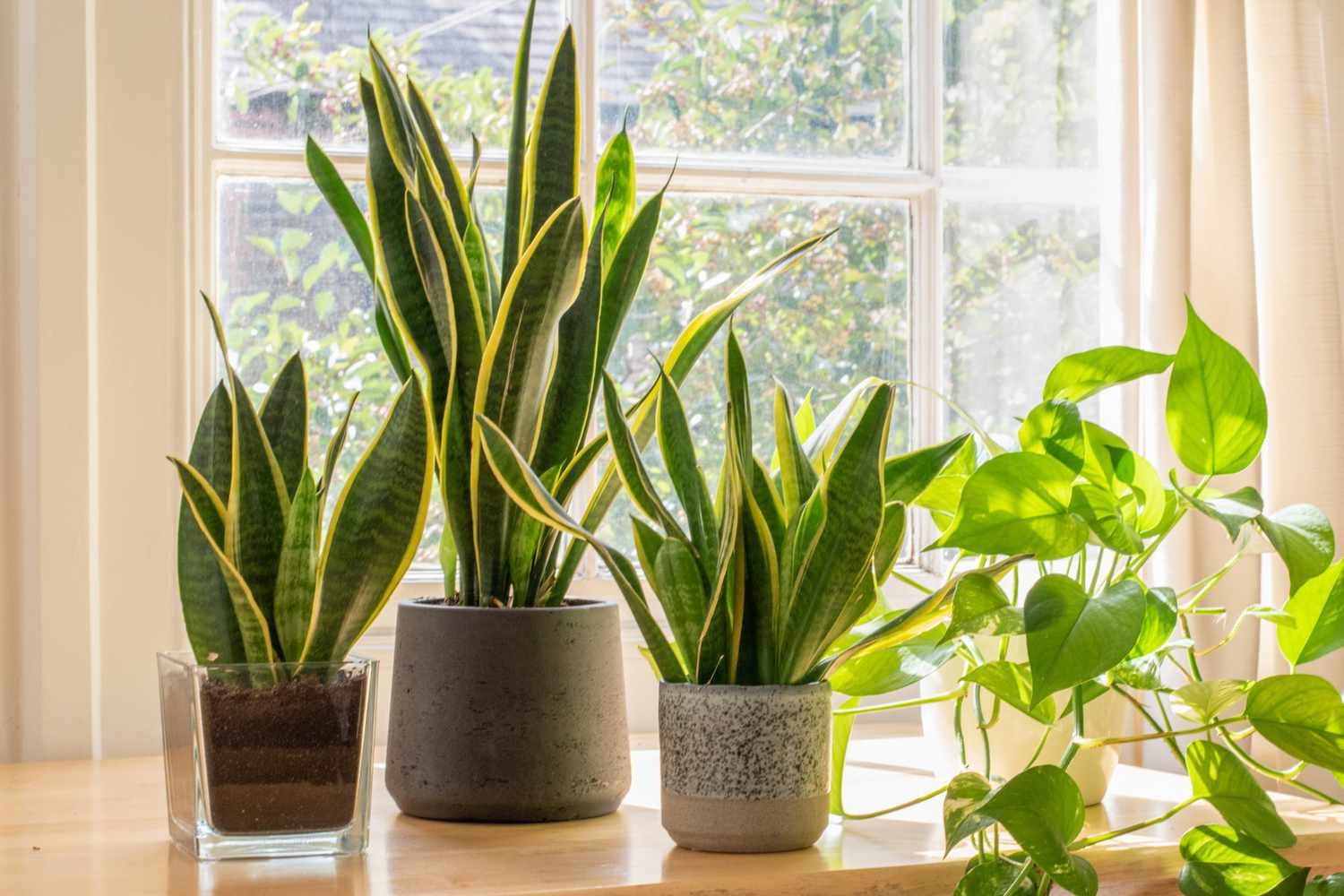A Beginner’s Guide to Monstera ‘Swiss Cheese Plant’ [With Caring Tips]
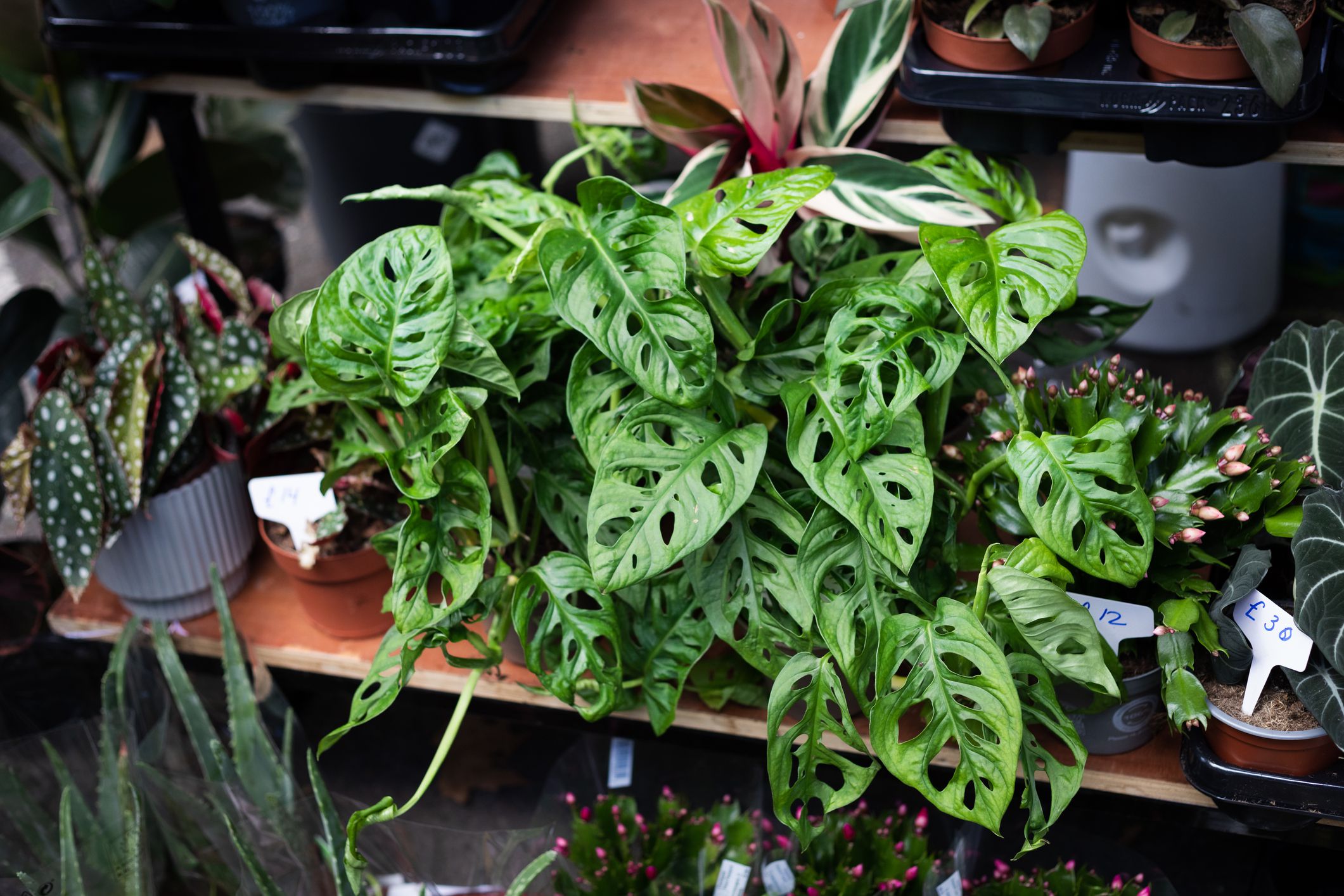
Table of Contents
Are you looking for a unique and visually stunning plant to add to your indoor garden? Look no further than Monstera Deliciosa, with its large glossy green leaves; this plant is a showstopper. But beyond its striking appearance, the Swiss Cheese Plant is also easy to care for and can thrive in various environments, making it a great choice for beginner and experienced gardeners.
The plant gets its name Swiss Cheese Plant from the natural cheese-like appeared holes or fenestrations. The holes are formed on the leaves as the plant matures. Although, initially, when the plant is young, the leaves are solid and do not have fenestrations, as the plant grows older, the leaves develop small perforations and slits, which then expand over time to form irregular holes on the leaves.
Let’s dive in and see everything you need about this plant, including its origin, care requirements, and tips for growing it successfully in the UK.
History and Symbolism of Monstera ‘Swiss Cheese Plant’
This beauty is not just a plant with holes; it has a long history of symbolism in ancient eras.
- In Mayan Culture, Monstera deliciosa symbolizes abundance and fertility, and the seasonal fruit is believed to have aphrodisiac properties.
- In Feng Shui, Chinese geomancy believes that the Swiss Cheese Plant symbolizes it brings good luck and positivity as the leaves resemble the hand of Budda, with the holes representing the way energy flows in the Universe.
- In contemporary popular culture, the Swiss Cheese Plant has become an icon of tropical style and interior design. Its distinctive foliage has been featured in fashion, art, and advertising, and the plant has been embraced as a symbol of the exotic and the natural.
Swiss Cheese Plant can be a beautiful indoor plant, but there are some challenges owners might face while taking care of the plant. Some challenges include Over watering, Lack of humidity, pesticides, Incorrect light etc.

Swiss Cheese Plant Care: Tips and Tricks for Healthy and Happy Monstera Deliciosa
Swiss cheese plants are fast growers and have a habit of vining. When cultivated in a container, it remains in a manageable size. It is important to remember that all parts of the plant are toxic to pets, and pet parents should be careful while growing this plant indoors.
Cultivate
Grow the plant in a humus-rich, moist yet well-drained plant with partial shade and bright indirect light. Cultivating it under a glass roof or in a well-ventilated and finished basement is a better option.
Light
Since Swiss cheese plants are tropical region plants, they are used to grow in the shadow of large trees. Although these trees thrive for bright indirect sunlight, when overexposed to direct sunlight, there is a chance that leaves burn quickly. Therefore, if direct sunlight is unavoidable, restrict the exposure to 2 to 3 hours of daylight.
Humidity
Tropical plants are best adapted to warm, humid and moist environments. Humidity helps these plants to prevent their plant from losing moisture through transpiration. When the air is dry, transpiration occurs quickly, causing the plant to lose moisture. This can stress the plant causing wilting and leaf drops. For the Monstera to thrive, it is important to keep the humidity levels within the range of 50 to 60 per cent.
Watering
Swiss Cheese Plants need water consistently but do not soak or overwater. If the container’s soil is dry, it’s time to water the plant. Irrigate until some water drains out from the holes beneath the container.
Potting
Swiss Cheese Plants thrive for well-draining containers, nutrients and good- aeration to the roots. Use a high-quality mix suitable for tropical plants, like peat-free compost, which is recently famous for its environmental benefits. These composts provide good drainage and aeration, which can help to prevent the rotting of roots in Swiss Cheese plants. An African violet mix is also an excellent option for Swiss Cheese plants as it is designed to develop draining and aeration, which is slightly acidic and consists of peat moss, perlite, and vermiculite. It’s also a good idea to choose a mix that contains organic matter, as this can provide essential nutrients for the plant’s growth.
Fertilizer
Please wait 4 to 6 months before adding fertilizers, as the potting mix has fertilizers. After that, use an all-purpose liquid fertilizer every month, and follow the precautions before using it.
Pruning
If your Swiss Cheese plant is a climber, it might need pruning if it is outgrowing the available space. Pruning is trimming superfluous parts and dead leaves to encourage plant growth. Always aim to prune in spring and use sterile pruning shears to cut no more than 25% of the stem. Do not forget to remove dead and damaged leaves.
Propagating
Swiss Cheese plants can be propagated through stem cuttings, a relatively straightforward process. First, choose a healthy 4–6-inch grown stem, and apply root hormones to encourage fast growth of the plant. Next, place the branch in a small container with drainage holes and nutrient potting mix, leave it for a few months and water consistently for the plant to form healthy roots. Once the stem is well grown, transplant it into a larger pot.
It can also be grown through seeds; plant the seeds in a shallow tray with a moist starting potting mix. Cover the tray with plastic and trap the moisture; leave the tray in soft and indirect sunlight and let the seed germinate for a few weeks. Once the seeds germinate, remove the plastic wrap and let the tray rest for a few months till the seedling is ready to transplant to a bigger pot.
Propagating is an enjoyable and engaging process; the key to growing a healthy plant is patience.
Pests
Swiss Cheese plants, like all plants, can be susceptible to various pests. Here are some common problems that can damage Swiss Cheese plants:
- Spider mites: These tiny pests can be challenging to see with the naked eye, but they can cause significant damage to Swiss Cheese plants by sucking the sap from the leaves. Signs of spider mite infestation include yellowing leaves, webbing, and small brown spots.
- Mealybugs: Mealybugs are small, white, cotton-like insects found on the leaves and stems of Swiss Cheese plants. They feed on the plant’s sap and can cause stunted growth, yellowing leaves, and wilted stems.
- Aphids: Aphids are small, pear-shaped insects found on the leaves and stems of Swiss Cheese plants. They feed on the plant’s sap and can cause curling or distortion of the leaves, yellowing, and stunted growth.
- Fungus gnats: Fungus gnats are small, black flies attracted to damp soil. They can lay their eggs in the mud of Swiss Cheese plants, and the larvae can feed on the roots, causing stunted growth and yellowing leaves.
- Scale insects: Scale insects are small, round, or oval-shaped insects found on the leaves and stems of Swiss Cheese plants. They feed on the plant’s sap and can cause yellowing leaves, stunted growth, and premature leaf drop.
Since these plants are rarely fatal and can survive almost anything, these pests can be treated with nontoxic pesticides and natural ingredients like Neem oil, Garlic and clove mix, soap spray, and Vinegar solution. Although these natural remedies may not be as effective as chemical pesticides, it may take longer to see the results. So first, apply it on a minor part of the leaf and see the results before using it on the entire plant to avoid damage.
Plant Diseases
Swiss Cheese plants are considered disease-resistant but can still be vulnerable to conditions that can stunt the plant’s growth, causing wilting, yellow and damaged leaves.
- Root Rot: Overwatering and poor drainage lead to fungal disease, which causes the plant roots to rot.
- Leaf Spot: Leaf spot is a fungal disease that causes small, circular spots on the leaves, which can be black, brown or yellow.
- Powdery Mildew: A fungal disease that causes a white powdery coating on the leaves.
- Anthracnose: is a fungal disease that causes black spots on leaves and stems.
Do not let these diseases take over your plant! To maintain a healthy Swiss Cheese Plant, ensure the pot has a proper drain and good air circulation around the plants and the roots. Do not expose them to direct sunlight or overwater the plant; if you notice any signs of disease, remove the dead and damaged leaves and check for pests and insects.
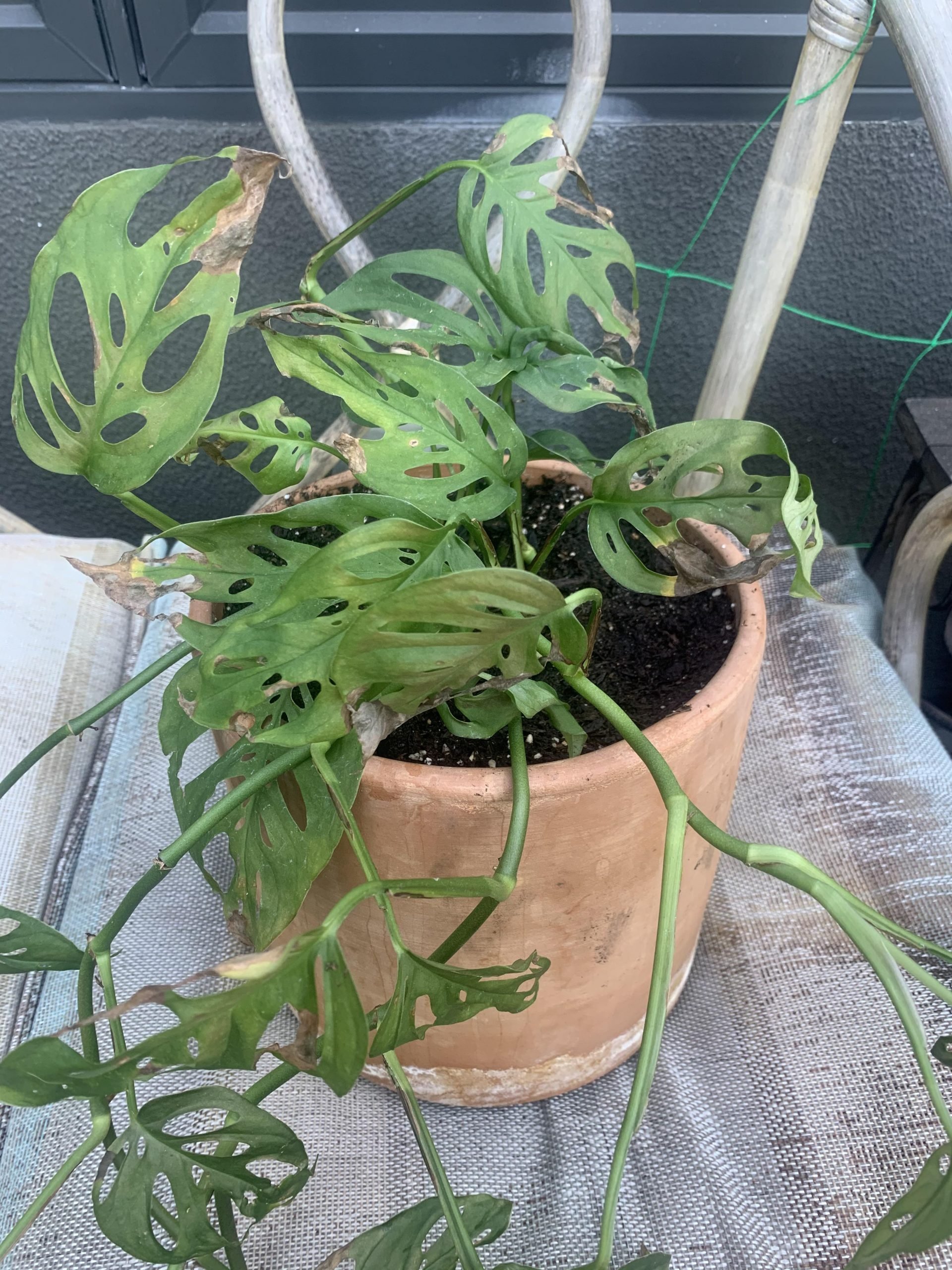
How to Revive Your Dying Swiss Cheese Plant
If your Swiss Cheese Plant is dying, it could be because of the environmental conditions or the aspect of the plant. If you identify wilting, yellow leaves, and black spots burns on leaves; it is time to assess the state of the plant and take the necessary steps to revive it. Here are some steps to restore your Swiss Cheese Plant before it is late.

1. Assess the Living Condition
Look for moisture in the soil, leaves, stems, and roots to understand the level of damage. Most of the time, it could be overwatering, direct sunlight, pests or diseases.
2. Adjust Watering Levels
Observe the dryness in the soil before watering the plant; also, check and unclog the drain holes at the bottom of the pot.
3. Repot the Plant
If the soil is damp and over-moist, transplant the plant to another pot and add some extra soil or change the earth. Make sure the soil is well draining and fresh. This can improve the overall health of the plant.
4. Light Conditions
Due to the tropical nature of the plant, the Swiss Cheese plant thrives in bright and indirect sunlight. If the lighting is poor, move it to a more colourful place where the plant can get enough light.
5. Pests & Diseases
If you notice any Pests & Diseases, identify the disease or the infecting pest to avoid further damage. If the infection is less, treat it with natural ingredients, and use chemical treatments if the condition is uncontrollable.
Be patient, and do not give up easily. Your Swiss Cheese Plant can return to normal lustrous condition with proper care and attention.
Conclusion
Growing your Swiss Cheese Plant can be a fun and rewarding experience for any plant lover. Not only is it a beautiful addition to any indoor space, but its unique leaves and easy-to-care-for nature make it a perfect starter plant for beginners. Remember to give it plenty of light, water it properly, and fertilize it regularly. Don’t be afraid to prune it if needed, and give it some extra support as it grows taller. With the tips and tricks in this guide, you can watch your Swiss Cheese Plant grow in no time.
Whether you’re a seasoned plant enthusiast or a newbie to the world of indoor gardening, with a little patience and persistence, you’ll soon have a thriving and flourishing plant.
So why not add a touch of tropical paradise to your living space and bring a bit of the outdoors inside with this amazing plant? Happy gardening!

![Learn How to Grow and Care for Figs Tree with These Tips [UK]](https://staging.thearches.co.uk/wp-content/uploads/How-To-Grow-Care-For-A-Fig-Tree.jpeg)
